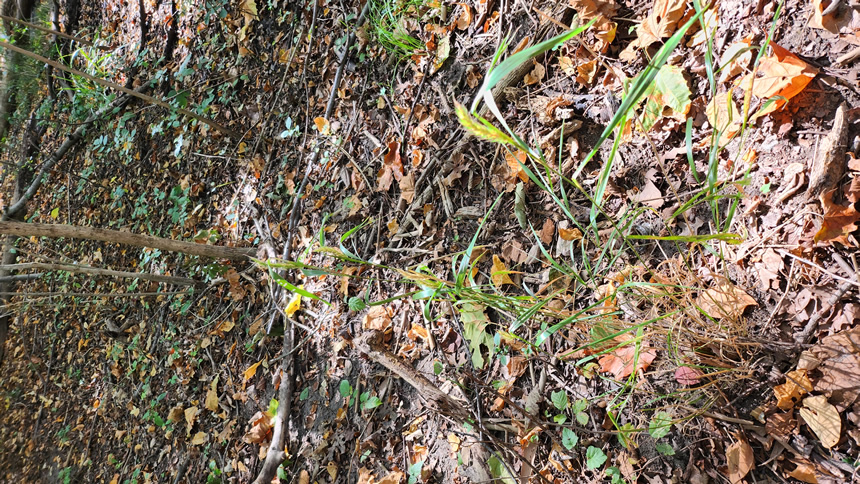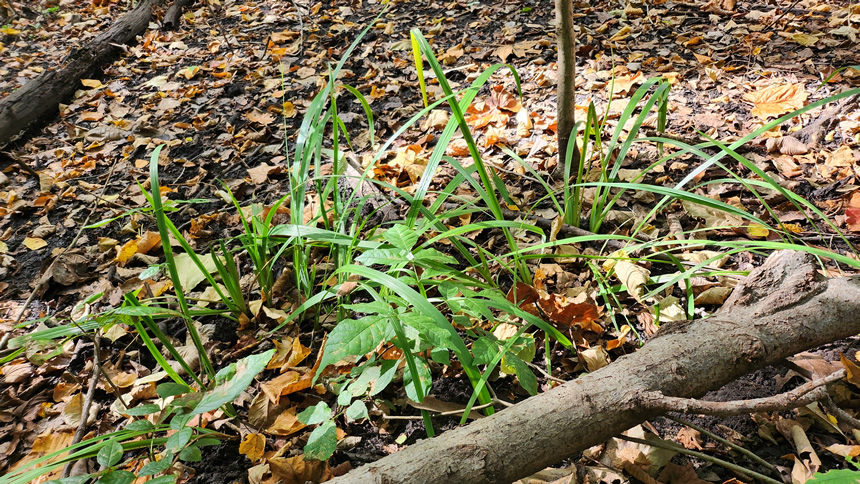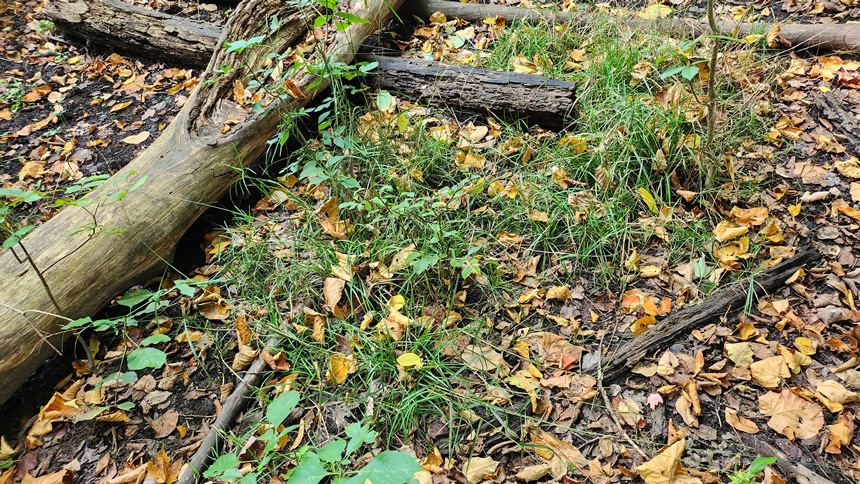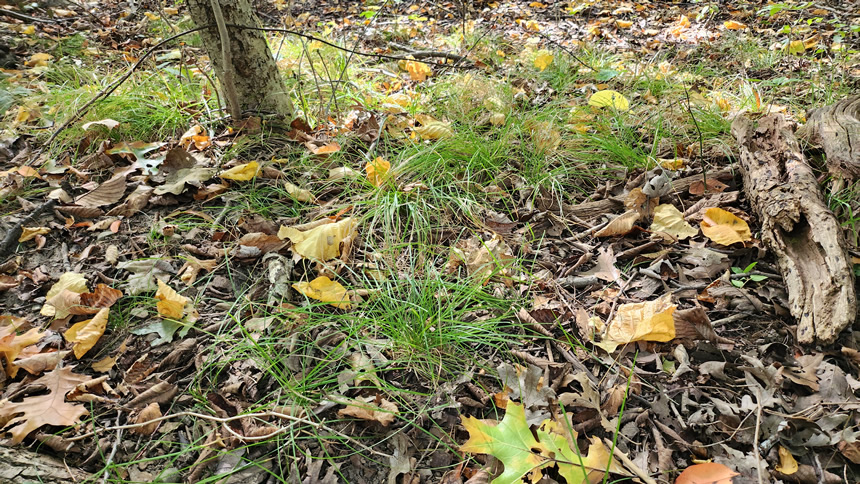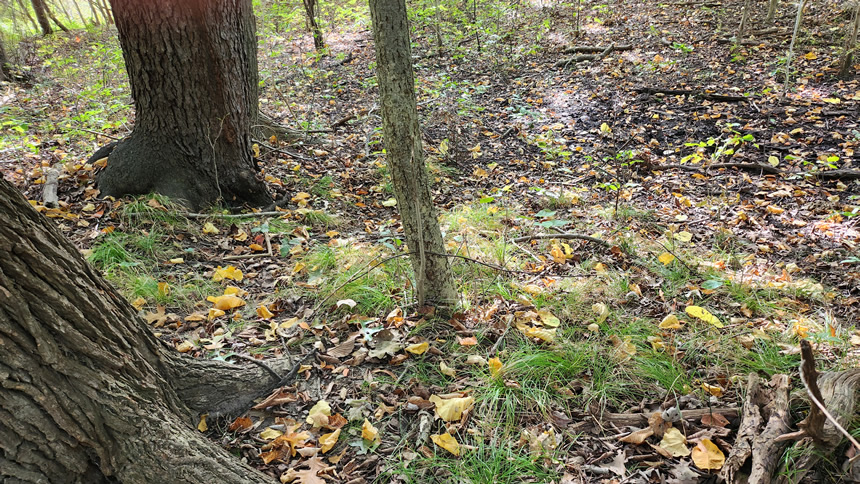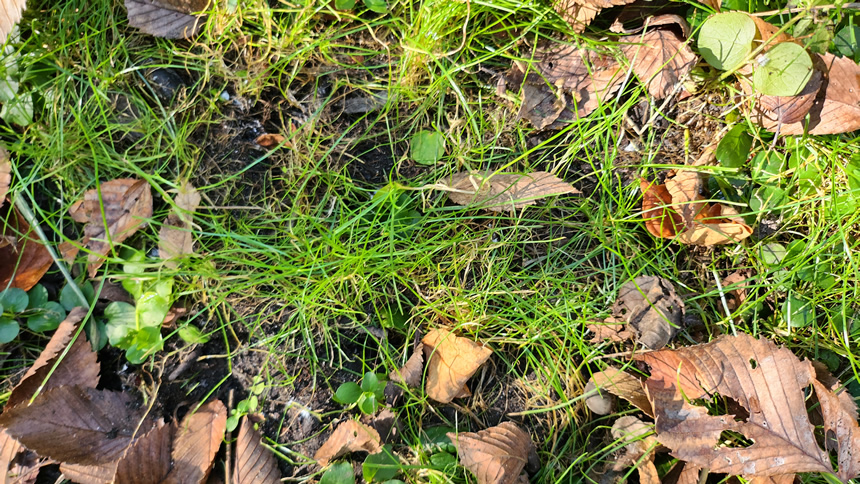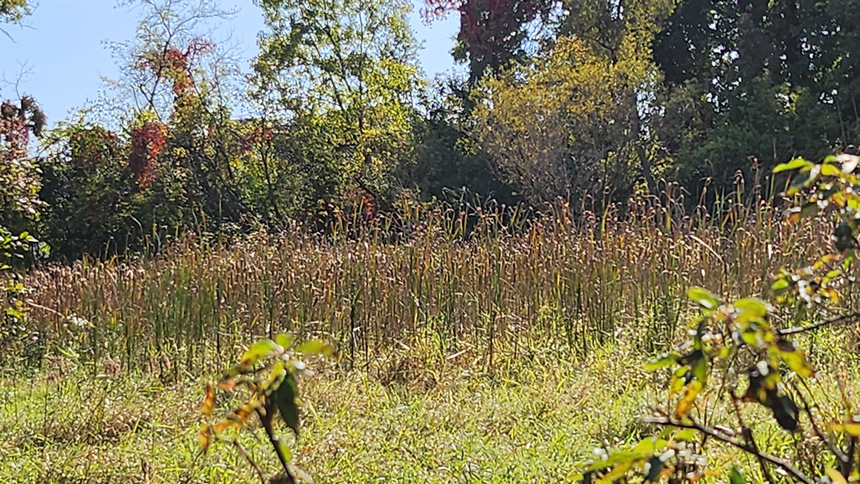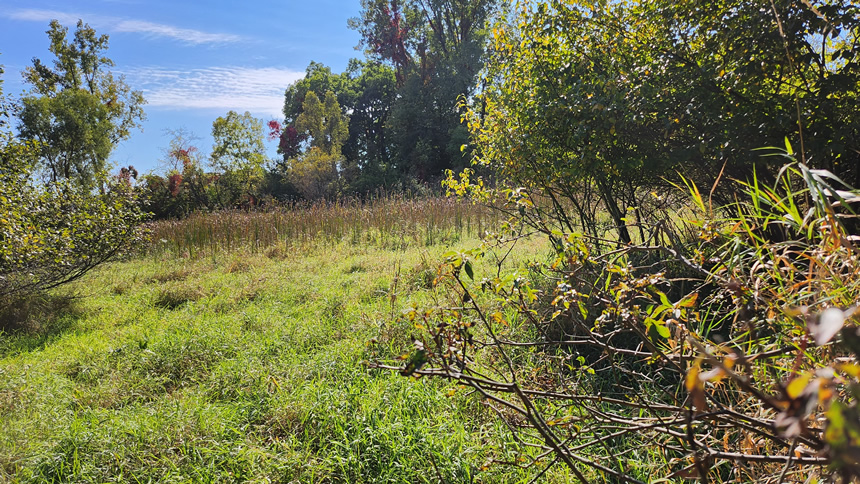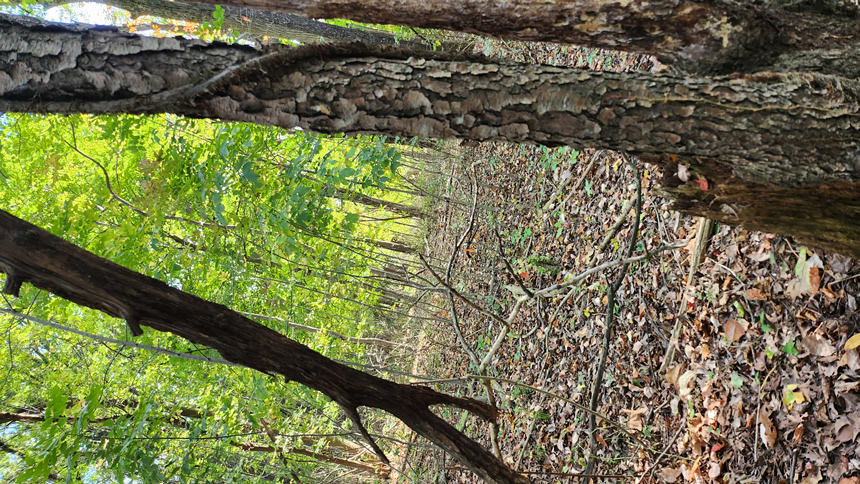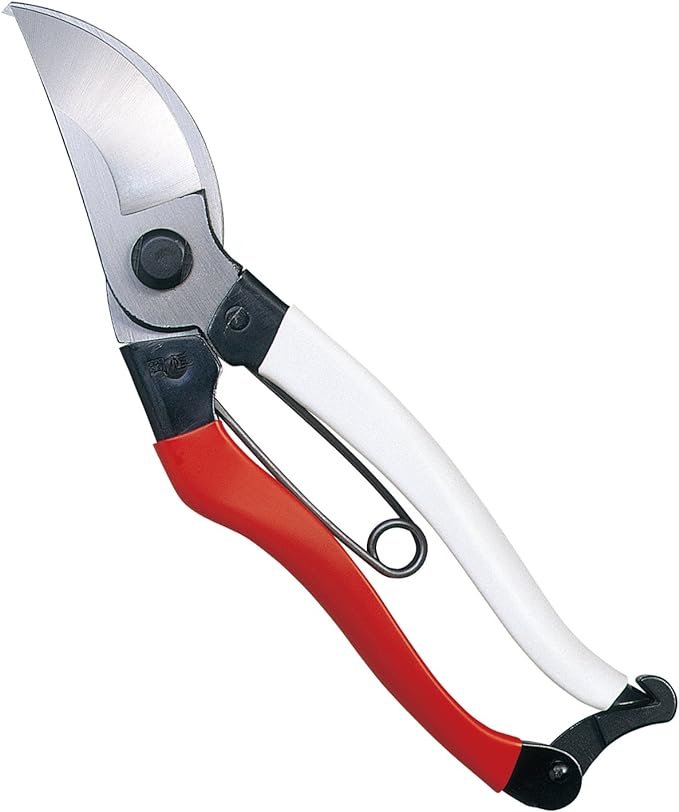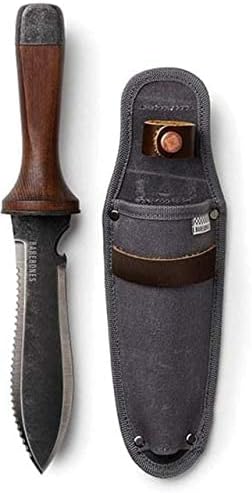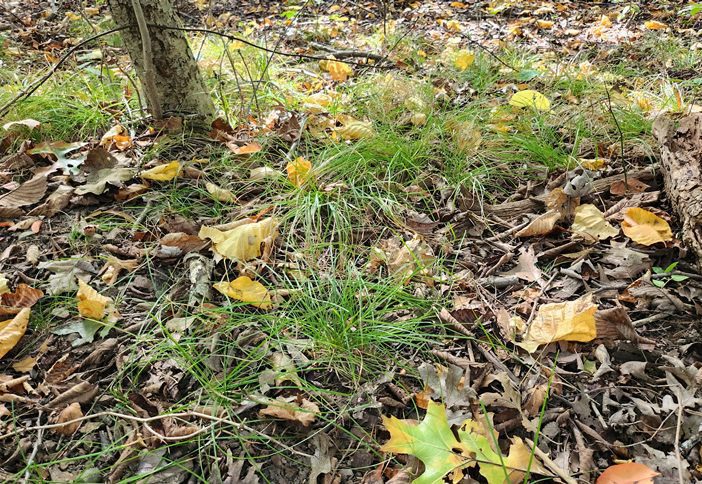
Fall brought more Motherwort, but also quite a few new Native Grasses, and only a small handful of Garlic Mustard. Not bad compared to last year! I also started planning for the wetlands work. Several Native species have made it and are growing 3′ or more. They are giving me a good idea as to what will survive.
Newly Identified species (Plant ID app, with cross reference from a 2nd app or Google search.) All still need to be certainly confirmed.
Sweet Flag or American Burr-weed (will identify next year) , Needle Spikerush, Common Snowberry, Pennsylvania Sedge, Virginia Wild Rye (planted,) Tufted Hair Grass, Stout Woodreed, Toothed Plagiomnium Moss (possible id) , Blue Skullcap, Purple-Leaved Willowherb, False Mermaidweed, American Hog Peanut, American Germander, Reed Canary Grass, Nimblewill, Witchgrass, Green Bulrush, Blue Vervain (planted 3 years ago.) Gray Alder, Sorghum (???) , Tall Flatsedge, Flebane, Rice Cutgrass, Jungle Rice (?? not good,) Deer tongue Grass, Sneezeweed, Horseweed …interesting:
Michigan Flora/Horseweed: Now considered a nearly cosmopolitan weed, but apparently native to North America, and presumably Michigan, where collected by the First Survey in both Berrien and Jackson Cos. in 1838.
And happily, Wood Sorrel–with pretty heart-shaped leaves! (Not all pictured here–and there are invasives in these spots. Including Creeping Jenny, which must have travelled in “deer feet.” It’s often near Lily of the Valley patches (which are gone now–after 3 rounds of “attention,” but some may re-emerge next year.)
